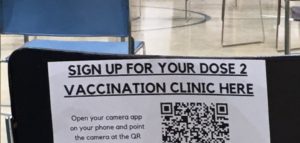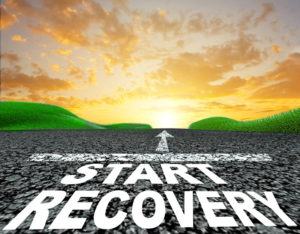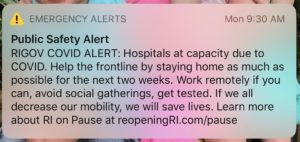The vaccine is top of mind for many of us and a lead news story most days. Whether we are in a prioritized group wondering when/how/where we will be able to get the vaccine or are helping a family  member in one of those groups sort it out. We are disappointed to hear the supply from Pfizer and Moderna is so limited at this stage. We are frustrated and anxious not knowing when we will be able to get the vaccine.
member in one of those groups sort it out. We are disappointed to hear the supply from Pfizer and Moderna is so limited at this stage. We are frustrated and anxious not knowing when we will be able to get the vaccine.
I share all those feelings. I am anxiously waiting to learn when my state of Rhode Island will start vaccinating 65+ so I can get my husband and I an appointment. With the percent of doses administered overall in Rhode Island only 56% of what has been distributed and our state currently receiving just 14,000 new doses each week, I am not optimistic that it will be soon.
In spite of any frustration you may feel about your own state’s progress, the good news at the macro level is that in the last week, an average of 1.25 million doses per day were administered in the U.S. That is even better than the goal of 1 million per day for the first 100 days of the Biden Administration. And there is more good news regarding the supply – 200 million more doses were ordered by the Biden Administration this week with the expectation that there will be enough doses for everyone who wants the vaccine by sometime this summer.
We know that vaccine plans vary by state. How to Get a COVID-19 Vaccine: A State-by-State Guide from the Wall Street Journal provides state website links and brief description of each state’s status. States vary on how groups are prioritized, the scheduling process and systems used, and the total number of doses available. In the 65+ group, I have friends and family who have driven more than 500 miles around their state for separate husband and wife appointments that they could only make at two different locations due to the demand, a couple who was only able to register for a lottery with 8000 doses to serve 250,000 people, a couple who relatively easily made appointments at their grocery chain to receive the vaccine from the pharmacist, and a couple who relatively easily made an appointment at a local community vaccine site.
The New York Times has a vaccine calculator – Find Your Place in the Vaccine Line – that puts it into perspective. You enter a few key data points and can see where you are in line within the U.S., your state, and your county – in other words how many thousands or millions of people are ahead of you. The graphic it produces helps you understand the order of groups and their relative size.
There are two trackers you might find interesting. The Johns Hopkins Coronavirus Resource Center tracks cases, testing and vaccines by state. You can see how your state is doing and where it ranks on vaccinations. The Bloomberg tracker shows how your state is doing by percent of doses used and number of doses administered.
There is a software system available from the CDC for states, counties and other organization to use – Vaccine Access Management System (VAMS). It handles pre-screening, registration, scheduling, and tracking. My state of Rhode Island will use PrepMod – a software solution in use by several states. Health systems appear to be using their own systems and assuming that patients can schedule through their patient portal or by phone. Some allow you to create an account if not already a patient.
I think we can all agree that front line health care workers needed to be first in line for the vaccine. But there have been stories of health systems vaccinating employees who only work from home, volunteers who aren’t coming into the hospital during the pandemic, board members and others who don’t appear to be in priority groups per the CDC guidelines. These systems have defended their actions by saying the more people vaccinated and the sooner is good for the community and that all staff are critical to the hospital’s operations. I can understand the frustration of people who are patients of those systems and in a prioritized group (such as elders or with underlying conditions) yet still waiting to learn when they will get the vaccine.
Let’s pivot to some positive stories of vaccine partnerships involving health systems to deliver shots in arms at scale. Continue reading →
 the Centers for Medicare and Medicaid Services. During the pandemic he provided reliable, relatable information and education with his daily tweets at @ASlavitt and award-winning “In the Bubble with Andy Slavitt” podcast. He quickly became a household name with my family and a trusted resource. Many trusted him and looked to him for insight.
the Centers for Medicare and Medicaid Services. During the pandemic he provided reliable, relatable information and education with his daily tweets at @ASlavitt and award-winning “In the Bubble with Andy Slavitt” podcast. He quickly became a household name with my family and a trusted resource. Many trusted him and looked to him for insight.







